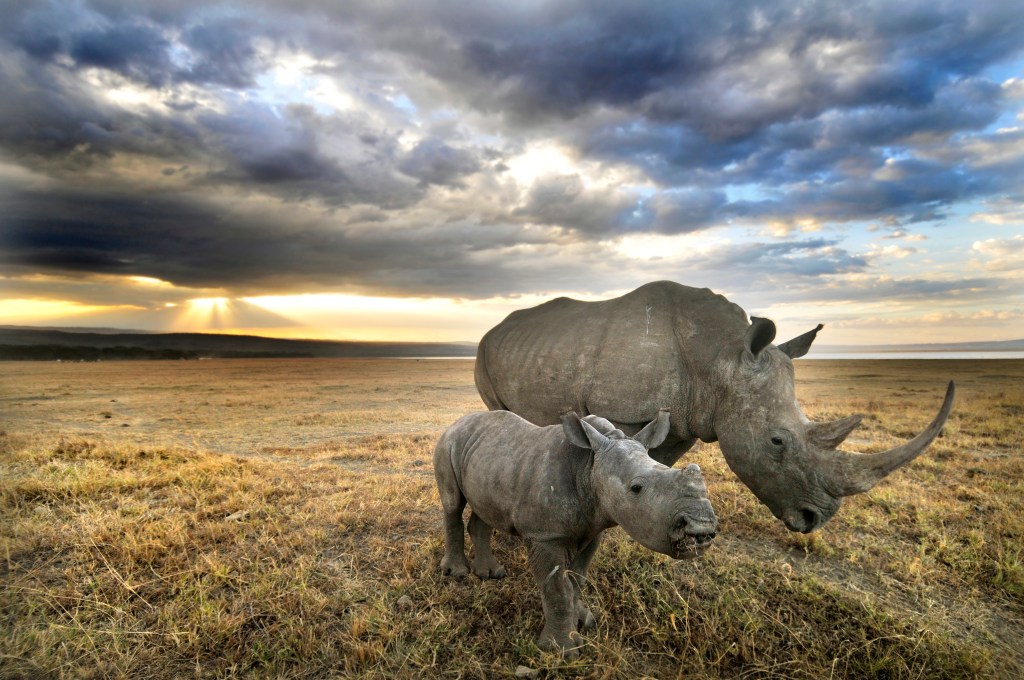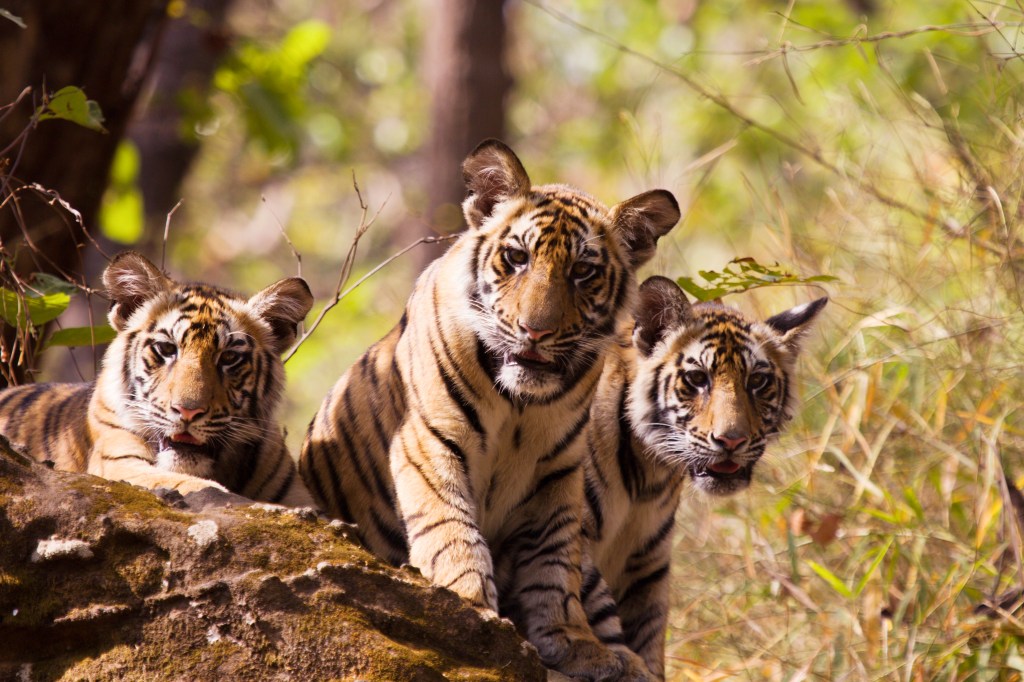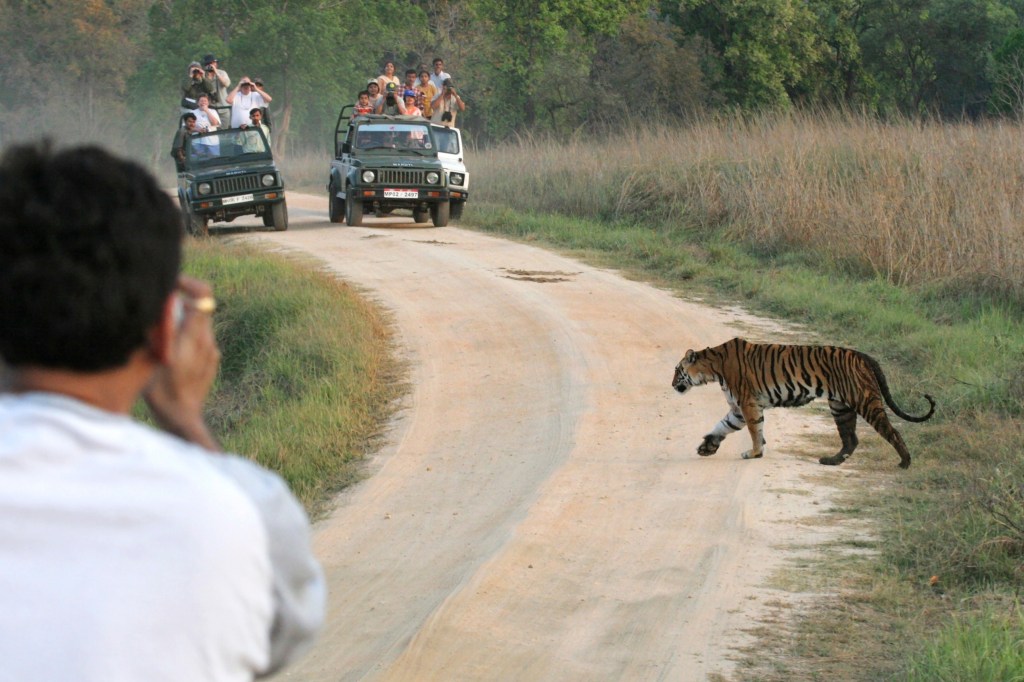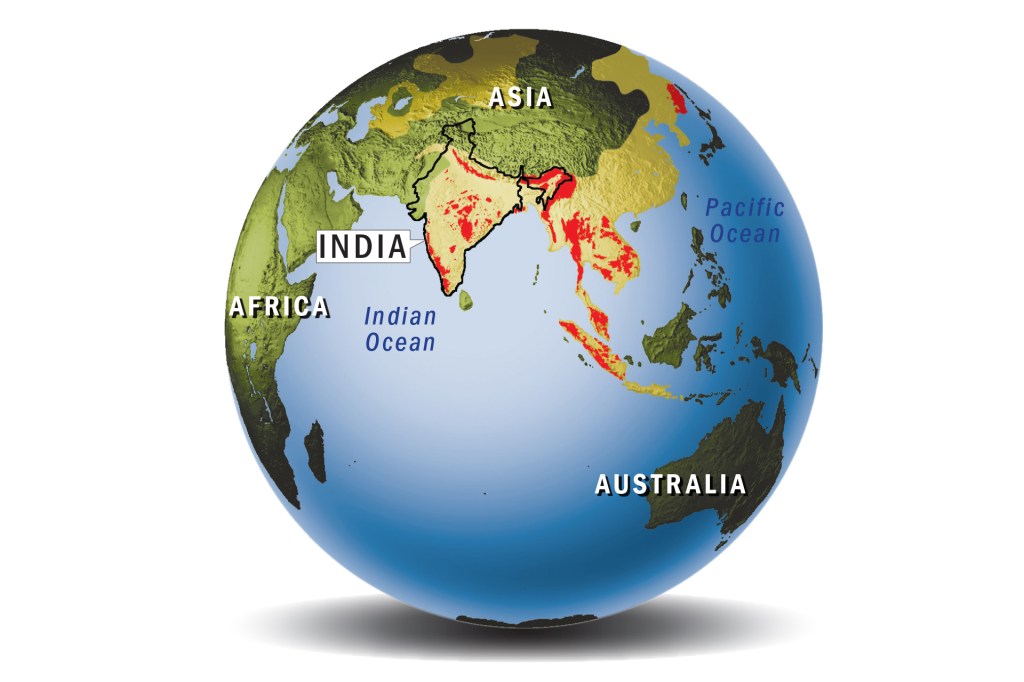
In 2010, the World Wildlife Fund (WWF) issued bad news: The world tiger population had hit an all-time low. Poaching
poaching
 CHRIS MINIHANE/GETTY IMAGES
the illegal capture or killing of an animal
(noun)
Poaching could lead to the extinction of the rhinoceros.
and habitat loss had taken their toll. In just 10 years, half of the world’s tigers had disappeared. Only 3,200 wild tigers remained.
CHRIS MINIHANE/GETTY IMAGES
the illegal capture or killing of an animal
(noun)
Poaching could lead to the extinction of the rhinoceros.
and habitat loss had taken their toll. In just 10 years, half of the world’s tigers had disappeared. Only 3,200 wild tigers remained.
Now there’s good news: Tigers may be making a comeback. There are about 4,000 wild tigers worldwide. In July, India announced that its tiger population had reached nearly 3,000. That’s a 30% rise in just four years. India now has 70% of the world’s wild tigers.
Prime Minister Narendra Modi is proud of his country’s efforts to save tigers. “Once the people of India decide to do something,” he says, “there is no force that can prevent them from getting the desired results.”

BABY FACES Tiger cubs huddle together in India’s Bandhavgarh National Park.
DAVID CALLAN—GETTY IMAGESKeeping a Promise
India’s government passed the Wildlife Protection Act in 1972. Tigers were covered under the law. Still, habitat loss was causing them to disappear. By 2006, there were just 1,411 tigers left in India. So the government committed to an even stronger plan.
In 2010, India and 12 other countries made a pledge. They promised to double their tiger populations by 2022. The animal’s fate depends on these countries reaching that goal.
Nilanga Jayasinghe works for the WWF. “We have made significant strides in tiger conservation,” she told TIME for Kids. “But the threats to tigers remain. All 13 range countries need to work together to secure a future for tigers.”

MAIN ATTRACTION Tourists keep a safe distance from a female tiger crossing a road in India’s Kanha Tiger Reserve.
MILE HIGH TRAVELER/GETTY IMAGESChallenges Ahead
To count India’s tigers, wildlife trackers and scientists covered 150,000 square miles of tiger habitat. They used thousands of cameras to record the animal’s movements. This data has helped India create areas called reserves
reserve
 BUCK SHRECK—GETTY IMAGES
an area where plants or animals are protected
(noun)
We visited a grizzly bear reserve.
. There, tigers can spread out and hunt. India has about 50 reserves.
BUCK SHRECK—GETTY IMAGES
an area where plants or animals are protected
(noun)
We visited a grizzly bear reserve.
. There, tigers can spread out and hunt. India has about 50 reserves.
Sometimes, tigers wander. That’s when trouble starts. The tigers may encounter people or livestock
livestock
 ASIA_IMAGES—GETTY IMAGES
farm animals
(noun)
Joey's family raises goats and other livestock on the farm.
. India’s government has been moving villages farther from reserves. This is to protect livestock from hungry tigers. It can also prevent villagers from killing tigers out of fear or for revenge.
ASIA_IMAGES—GETTY IMAGES
farm animals
(noun)
Joey's family raises goats and other livestock on the farm.
. India’s government has been moving villages farther from reserves. This is to protect livestock from hungry tigers. It can also prevent villagers from killing tigers out of fear or for revenge.

GOOD NEIGHBORS These villagers once lived in an area that became a tiger reserve. The Indian government helped them resettle.
COURTESY SHARI RODRIGUEZMost people are willing to move. In India, “there is a lot of national pride surrounding tigers,” says Shari Rodriguez. She is a wildlife expert at Clemson University, in South Carolina. “We cannot save wildlife without the cooperation of the people.”
But challenges remain for tigers all over Asia. They are poached for their skin. Their whiskers and teeth are sold as medicine in China. “They’re still in peril,” Rodriguez says. She draws hope from India’s success: “This is a small, small victory in a long war against extinction.”

A Big Goal
Most of the tiger’s historical range is gone. So India and 12 other countries have boosted conservation efforts. India, Bhutan, Nepal, and Russia have increased their tiger populations. The WWF is working to bring tigers back in Cambodia. The cat was declared extinct there in 2016.
Looking for the cover quiz? After you sign in, click on the Resources tab to search Teaching Resources for printable versions of all our quizzes.













